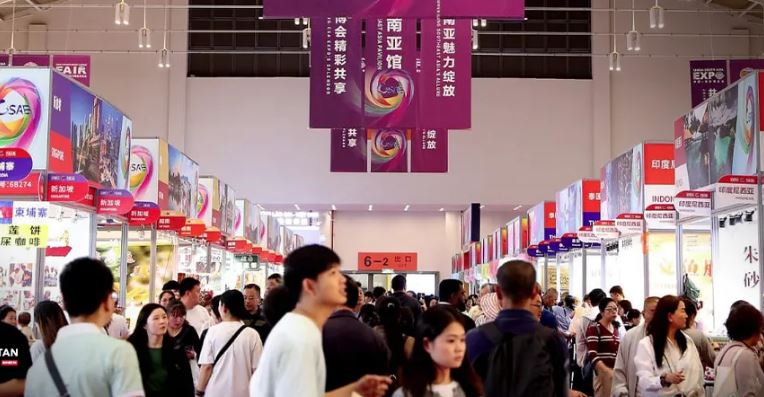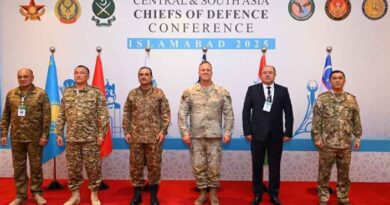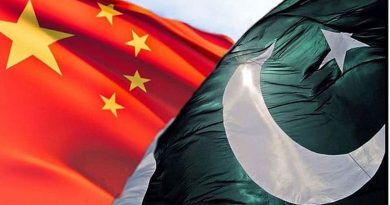China’s partnerships with regional countries deepens
KUNMING: As of June 23, a total of 163 trade agreements have been signed at the 9th China-South Asia Expo, with a combined contract value of 8.663 billion yuan.
According to the Yunnan Provincial Department of Commerce, 150 of these are formal agreements worth 8.3 billion yuan, 12 are letters of intent totaling 213 million yuan, and one is a framework procurement agreement valued at 150 million yuan.
Professor Lin Minwang, Vice Dean of the Institute of International Studies at Fudan University, shared his views in an interview with China Economic Net:
“China and South Asian countries share a common vision for the future and the world. We all hope for a stable international order and resilient supply chains. Right now, both sides are working toward deeper interconnection.
In today’s turbulent global landscape, our shared interests are growing. China is strong in industrialization, while many South Asian countries excel in agriculture.
This complementarity creates significant potential for future economic cooperation.”
Xu Bu, member of the UN Secretary-General’s High-Level Advisory Board on Effective Multilateralism and President of the Institute of Global Development and Security at Jiangsu University, provided further insight in an exclusive interview with China Economic Net:
“When we talk about multilateralism today, it’s unfortunate that the global system is not functioning as effectively as it should.
However, multilateral cooperation in the Asia-Pacific region is advancing rapidly. China’s partnerships with both South and Southeast Asian nations are strengthening regional multilateral frameworks that benefit all parties involved.
The China-South Asia Expo is a crucial platform that supports this progress. It has facilitated significant economic cooperation—not just between China and South Asia, but also with Southeast Asia.
For instance, China’s bilateral trade with Pakistan has exceeded $23 billion, and with India, over $150 billion. Regional economic cooperation is on a constructive path, but we must not take it for granted.
Continuous efforts are needed to safeguard and sustain cooperation—whether in economics, security, or politics.”
Amid a global realignment of trade, regional cooperation is emerging as a key strategy for navigating uncertainty and promoting shared prosperity.
In this context, China’s deepening ties with South and Southeast Asian countries have gained remarkable traction.
Events like the China-South Asia Expo are playing an active role in integrating regional supply chains and enhancing market connectivity.
Zhou Mi, a researcher at the Chinese Academy of International Trade and Economic Cooperation, emphasized Asia’s unique strengths: a combined consumer market of 2.8 billion people, representing immense potential, and strong institutional frameworks like the Regional Comprehensive Economic Partnership (RCEP).
“These factors,” he noted, “create ideal conditions for building a more cohesive regional economic community.” He added:“In my view, regional collaboration presents a powerful package for long-term development.
If we look back at North America—take NAFTA, for example, established in 1994—it was built on the developmental differences between the U.S., Canada, and Mexico, which helped foster vertical integration along the supply chain.
Similarly, China, Southeast Asia, and South Asia, with their vast populations and diverse development stages, offer immense opportunities.
The RCEP negotiations began in November 2012, led by ASEAN and initially involving its six existing FTA partners (China, Japan, South Korea, Australia, New Zealand, and India). We hope to strengthen these types of mechanism further, ensuring collaboration is grounded in mutual commitments.
These commitments can shape expectations and lay the foundation for a new, globally significant platform for cooperation and development.”
Pakistan’s Animal Feed export to China rises 16pc from Jan-May of 2025
Pakistan’s export of animal-origin flours and meals to China surged by 16% from January to May 2025, reflecting a growing trade dynamic in agro-based commodities between the two countries.
It was reported by China Economic Net on Tuesday quoting General Administration of Customs of China.
According to the report, Pakistan exported 21,138,180 kilograms of flours, meals, and pellets made of fish, crustaceans, molluscs, and other meat by-products under commodity code 23012010—mainly used for animal feeding.
The export reached a total value of $19.87 million in the first five months of 2025, compared to $17.17 million in the same period last year. The average unit price stood at $0.94 per kilogram.
Industry experts say the increase is driven by China’s expanding demand for high-protein animal feed to support its livestock and aquaculture sectors.
Pakistani fishmeal, predominantly sourced from marine fish waste, is favored for its cost-effectiveness and stable protein content.
Abid Ali an exporter of flours& meals of fish, used in animal feeding said Pakistan continues to enhance the quality of its fishmeal exports, comparisons with domestic Chinese fishmeal indicate a competitive oil yield rate of approximately 8-10%.
However, Pakistani exports show slightly lower oil yields, generally ranging from 5-7%, due to differences in raw material composition and processing methods.
“In the Chinese market, Pakistani fishmeal is not typically sold through retail channels. Instead, it is absorbed by the food processing and feed manufacturing industries, especially in Guangdong, Shandong, and Fujian provinces, where it is used in formulations for poultry, swine, and aquaculture feed”, he added.
Analysts suggest the trend may continue through the year, supported by stable fishing activities in Pakistan’s coastal regions and Beijing’s favorable import policies under the China-Pakistan Free Trade Agreement (CPFTA) Phase-II.
With further investments in processing technology and quality assurance, Pakistan could expand its market share in China’s animal feed segment, contributing to both nations’ agricultural and trade cooperation under the Belt and Road Initiative.
It is to be noted that in 2024, Pakistan exported 22639.95 tons of flours & meals of fish, used in animal feeding, valued at $24.92 million.
Peru, Chile and Russia are the top exporters of this product to China in 2024 with value of $1.466 billion, $291 million and $271 million, respectively.- Agencies



